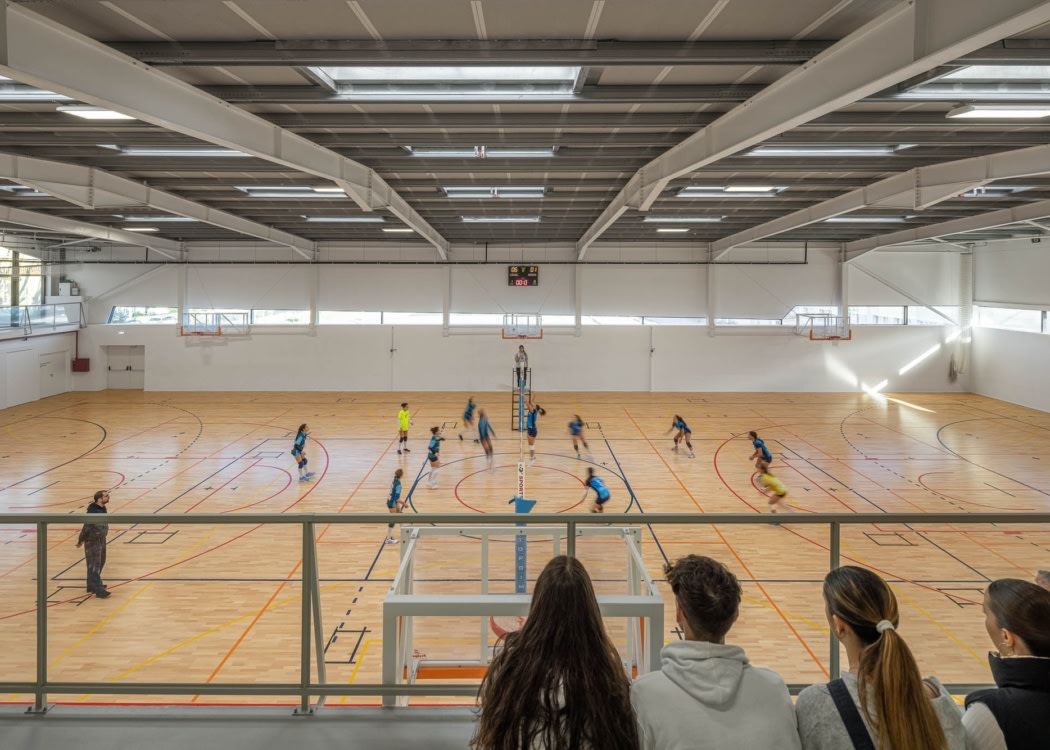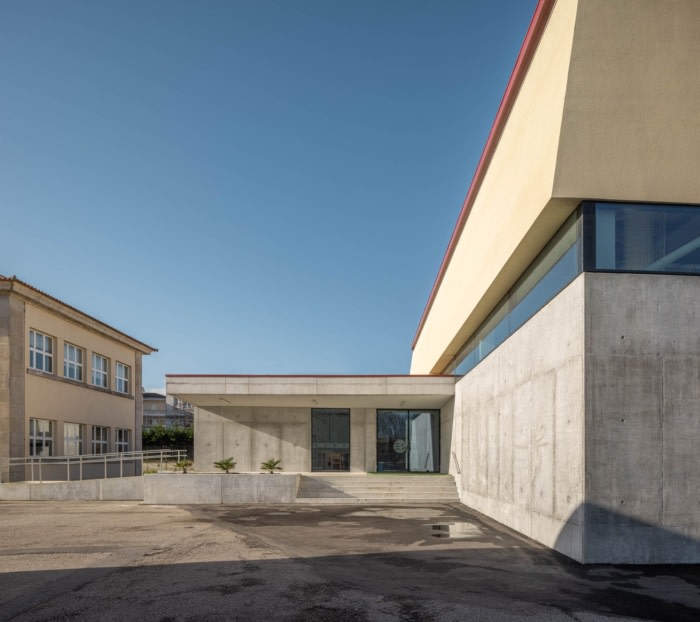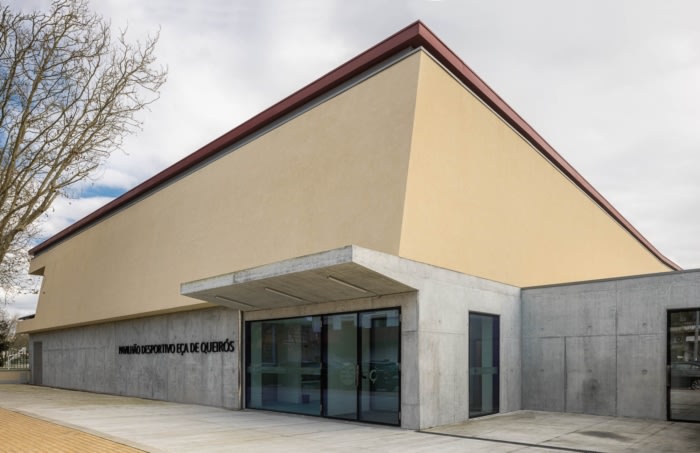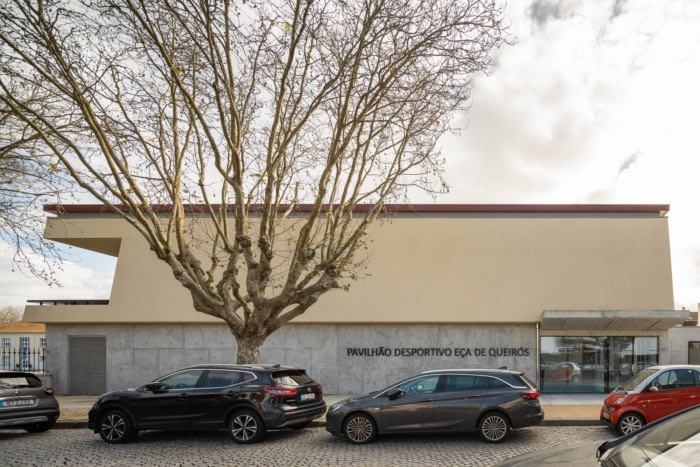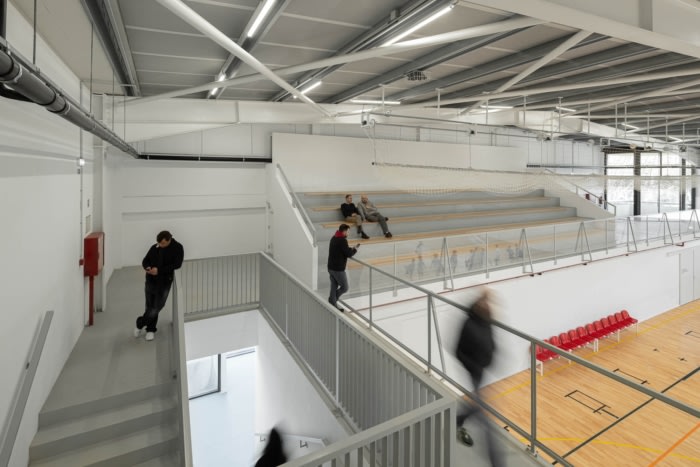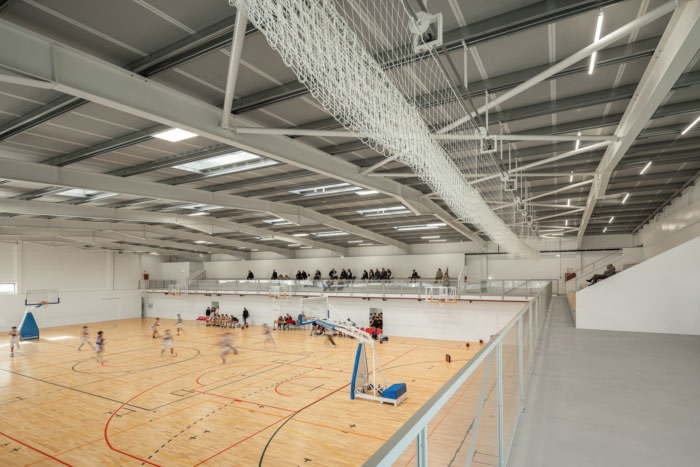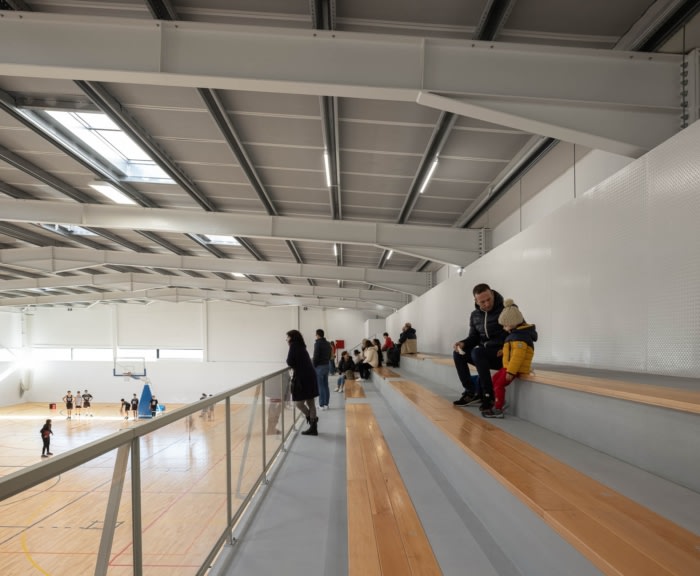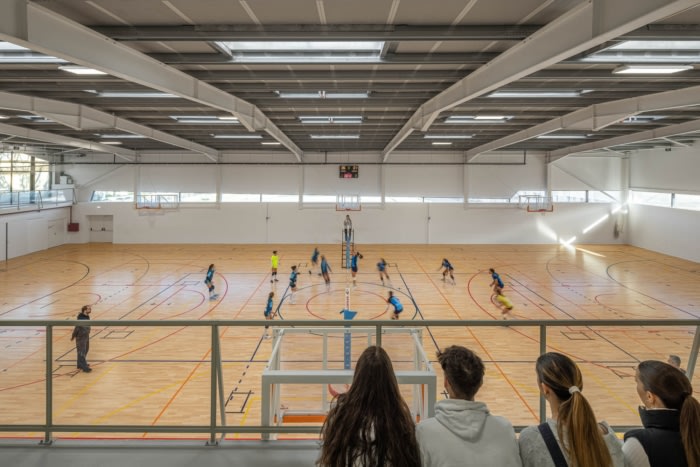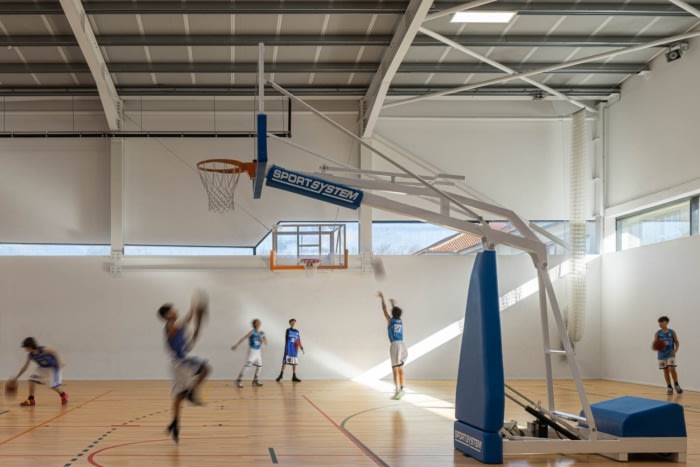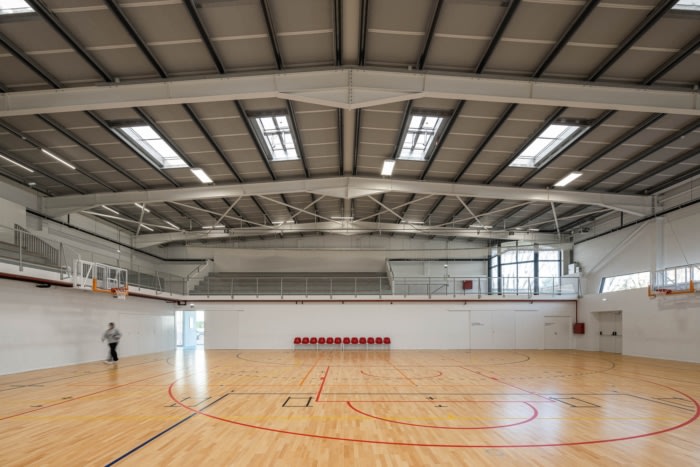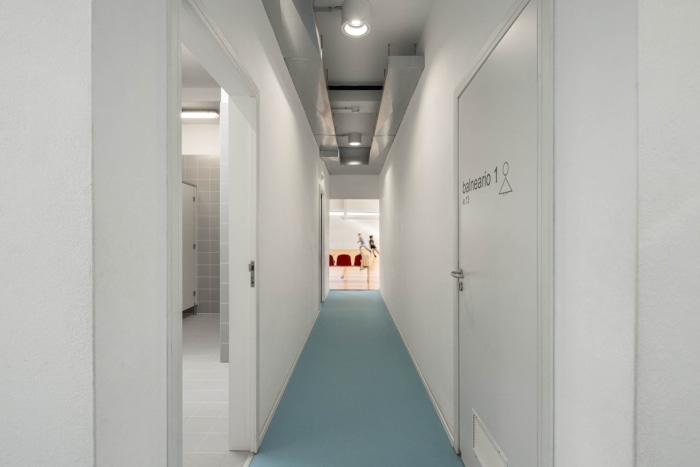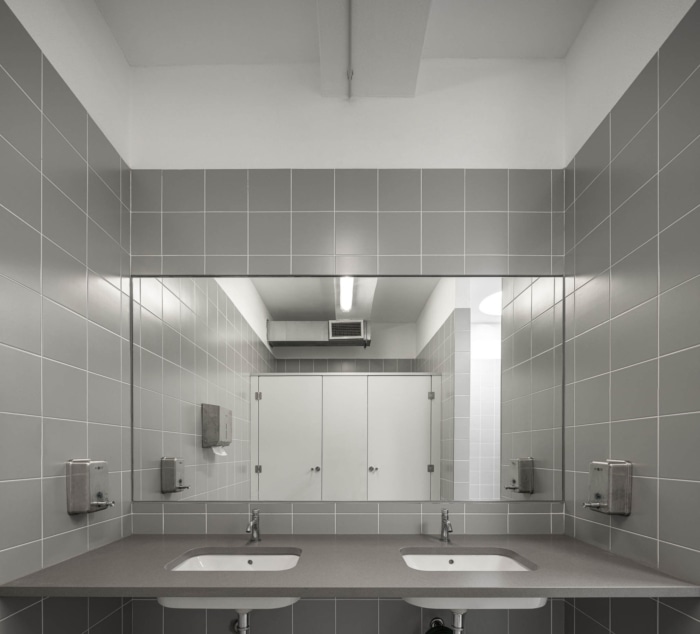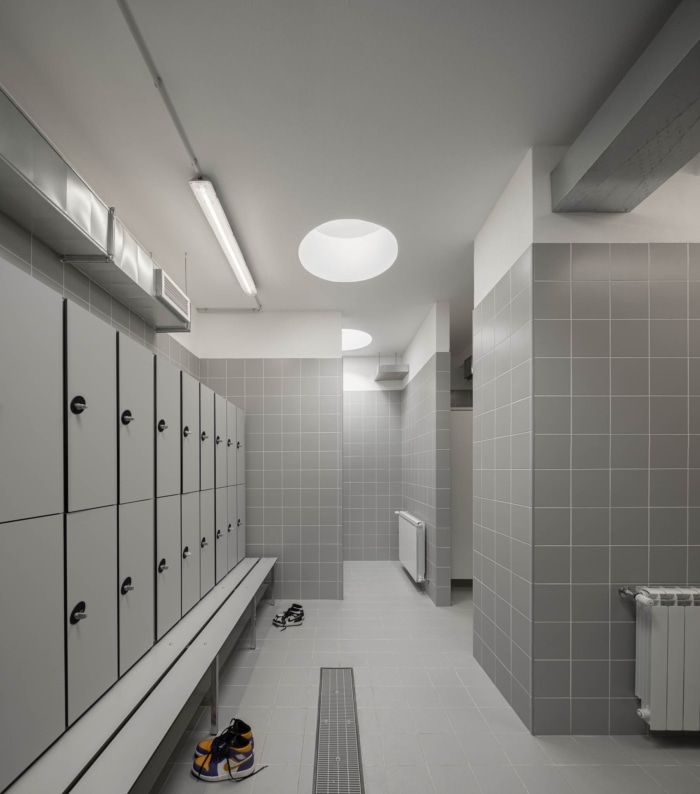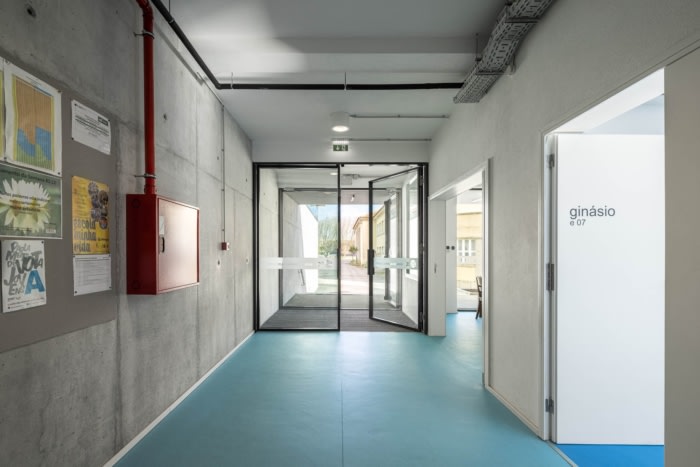Eça de Queirós Secondary School
Oval Studio designed the Eça de Queirós Secondary School giving them an expansive athletics facility in Póvoa do Varzim, Portugal.
The challenge of this project was to include a new sports facility in the complex of Escola Secundária Eça de Queirós. Despite having ample outdoor space for sports, with soccer fields, other sports and even an athletics track, this High School, located right in the urban center of Póvoa de Varzim (with two and a half hectares), did not had an adequate space to allow physical practice in any weather condition. The Eça de Queirós is a building set with long lasting presence in the memory of the people of Povóa for more than half a century, having served the population for several generations. In this sense, it was considered that any approach to design a new building to add to the existing ones had to be carefully analysed, seeking, if possible, a non-disruptive proposal with the context and the pre-existence surroundings.
Still, the program for the intervention included a sports hall, a support building with a gym, some changing rooms and complementary spaces.
Following this challenge, the project was conceived with a modern language but framed in the context of a built heritage from the 20th century fifties and sixties, with evident references of the architecture that we usually call “Estado Novo” style.
The general complex of Eça de Queirós High School has an orthogonal volume, in the form of a block unit with a uniform two-story height topped by a sloped roof. The implantation of the main body, with cloister, was carried out by the “Board of Constructions for Technical and Secondary Education”, in 1952, having António José Pedroso as Leader Architect. Subsequently, it appears that some expansion works were carried out and these were completed in the 1961.
In our intervention, the pavilion will create a new building front on Rua Alberto Pimentel, right next to “Casa Beires”, one of the first and most iconic works by Álvaro Siza Vieira. This entrance, far away from the main façade of the school is located on the opposite side of the huge urban block, and implied a stable framework with a housing environment. On the other hand, being a school, a rigorous entry control device was imposed, so that the equipment during the school period only works facing the interior of the school complex, and in the complementary period to the school period, it would be open to the public and automatically closing the school grounds.
These constraints implied a very cautious implementation proposal, mitigating the impact on the existing athletics track and making the intervention a minimal darning in the urban fabric of the complex. At the same time, throughout the design experience, a new architectural grammar was sought in order to integrate the new volume into a whole with an historical context.In organizational and functional aspects, the proposal tries to fit smoothly in the plot, with a simple implantation and incorporating the program.The building was designed with two volumes, both in reinforced concrete structure. The main body of the pavilion provides a macrostructure in pillars and metal beams. The main body will be coated on the roof with a double sheet system, with integrated insulation, assuming a necessarily iconographic image. The building has an exposed concrete base and an upper floor with a plastered finish and fiberglass exterior window frames, giving the fenestrations a more distinctive atmosphere.
The wooden sports floor provides the versatility of use that was sought, both for sports and for any event that the school or community intends to hold there. The natural light, always present, namely through the numerous skylights, seeks to minimize energy needs, but also to reinforce the interior-exterior connection. From the audience benches it is possible to appreciate the outdoor playground with the children playing having the old facades as background. At the interior corner, a small balcony was designed with intentional enigmatic metric and alignments, offering a place to pause, where parents can relax in the break from their children’s games next to the leaves of the trees on Rua Alberto Pimentel, and to appreciate the nonlinear facade of the house that is also known as the “bomb house”.
Design: Oval Studio
Design Team: Avelino Oliveira, Catarina Ferreira, Elina Briede, Gil Brito, Jorge Toscano, Juliana Cruz, Levi Barros, Ricardo Soares, César Lima Costa
Photography: Ivo Tavares Studio

